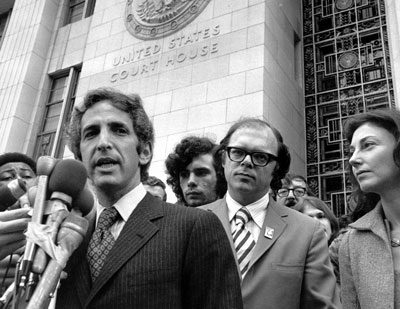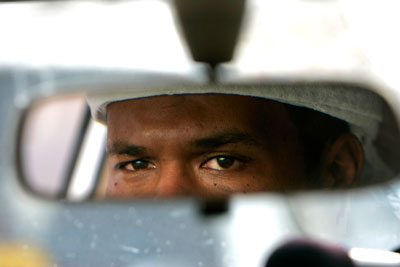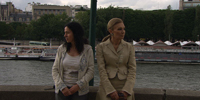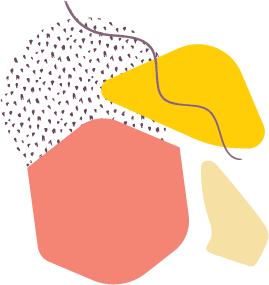In October 2006, the United States government decided to build a fence along its troubled Mexican border. Three years, 19 construction companies, 350 engineers, thousands of construction workers, tens of thousands of tons of metal and $3 billion later – was it all worth it? That’s the question posed in Rory Kennedy’s latest HBO Documentary THE FENCE (LA BARDA) as it investigates the impact of the project, revealing how the fence’s stated goals – containing illegal immigration, cracking down on drug trafficking and protecting America from terrorists – have given way to unforeseen consequences.
In THE FENCE (LA BARDA), Kennedy follows her subject through private ranches, protected wilderness, bustling border towns and scrub desert for a revealing and often surprising look at the story behind the controversial Southern U.S. Border Barrier. Beyond simply documenting the process of its creation, the film takes a humorous look at the absurd ideological contradictions and misinformation that have dogged the fence from its inception.
It is estimated that as many as 500,000 undocumented immigrants cross into the United States every year. In the aftermath of 9/11, the Bush administration responded to the enormous political pressure to close what was seen as a dangerously open door with a seemingly simple – some would say simplistic – solution: a fence dividing the United States from its neighbor to the south.
Approved by Congress under the Secure Fence Act of 2006 and passed by 73 percent of Congress, with support from both Republicans and Democrats, the fence was constructed at a cost of over $3 billion, a figure that continues to spiral upward with maintenance and repairs.
“The decision to erect the border fence initially sparked enormous controversy, but since its construction the issue has largely dropped from public view,” says filmmaker Kennedy. “Few people outside the area immediately affected by the fence understand the extent of the financial, political, social and environmental impact on people on both sides of the border.”
One of the most confounding and little known realities of the fence is that it covers only about one-third of the 2,000-mile border. A patchwork of materials ranging from corrugated steel and concrete to chain link fence and railroad ties, it stops abruptly in places, leaving long stretches of open space – stretches that the government has no plans to seal off. In fact, as one of Kennedy’s subjects says, sometimes the easiest way to get past the fence is to “go a mile down this road [where] there is no fence” and simply walk around it.
Featuring candid interviews with border patrol guards, ranchers, environmentalists and voices from both sides of the immigration controversy, while using humor to highlight the sometimes stark contrast between fact and political opinion, the film is a far-reaching and moving analysis of the financial, human and environmental costs the fence brings with it wherever it stands.
Kennedy assembles a host of witnesses, including eminent historian Douglas Brinkley, to create an unprecedented oral history of the fence, from its well-intentioned origins to its current bewildering form. Her camera captures the frustrations of border patrol guards who risk their lives thwarting each new incursion against the fence, only to face another, bolder attempt the next day. She interviews the coyotes (human smugglers) who continue to make their living illegally ferrying people from one country to the other, as well as people who have survived the potentially deadly crossing. Whether documenting the grief of the residents of Nogales, Mexico, who lost lives and property to a devastating flood caused by the fence; pointing out the absurdity of a U.S. golf course caught in a “no man’s land” between the fence and the actual border; or accompanying the San Diego Minutemen as they patrol remote territory used for illicit crossings, Kennedy puts a human face on the enormous impact the fence has made as it rambles across the Southwest.
At the same time, Kennedy brings her own analysis to bear in challenging the various assumptions and misconceptions surrounding the project. In one fast-paced, humorous montage, for instance, the film runs through all the different ways that $3 billion taxpayer dollars could have been spent in pursuit of the same goals. Given the costs – monetary and otherwise – that the taxpayers and individuals have borne, it seems an appropriate question to ask, as the film ultimately does – how did we get here? And, was it all worth it?
HBO Documentary Films presents THE FENCE, a Moxie Firecracker production. Directed and narrated by Rory Kennedy; producers, Rory Kennedy, Liz Garbus and Keven McAlester; writer, Mark Bailey; associate producer, Lauren Barker; editor, Sari Gilman; director of photography, Nick Doob. For HBO: senior producer, Nancy Abraham; executive producer, Sheila Nevins.



